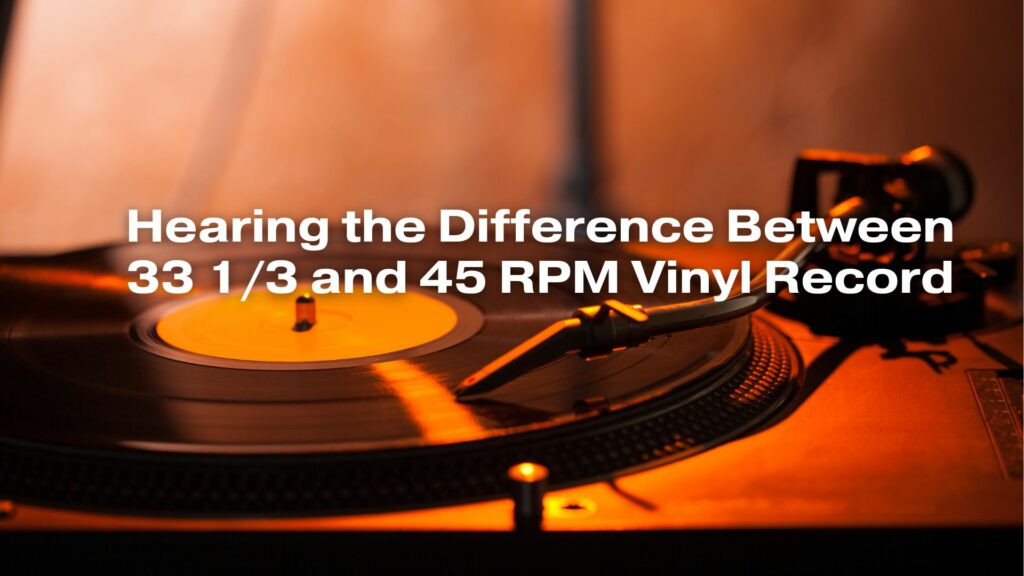Vinyl enthusiasts often debate the merits of different vinyl playback speeds, specifically the 33 1/3 RPM (Revolutions Per Minute) and 45 RPM. Both have their place in the world of vinyl records, and each offers distinct advantages and trade-offs. But can you really hear the difference between the two? Let’s explore the factors that influence the audio quality and discernibility of 33 1/3 RPM and 45 RPM vinyl records.
1. Speed and Audio Fidelity:
- The playback speed of a vinyl record directly affects the audio quality. Records spun at 33 1/3 RPM typically offer a longer playing time and, consequently, a lower linear speed, which can translate into slightly lower sound quality. In contrast, 45 RPM records have a shorter playing time but a higher linear speed, potentially resulting in improved audio fidelity.
- However, the difference in sound quality due to speed alone is often subtle. Factors such as the mastering process, quality of the pressing, and the condition of the record play a more significant role in audio quality.
2. Frequency Response:
- Records spun at 45 RPM have a higher potential for a wider frequency response, allowing for more detailed and extended high frequencies. This can be advantageous for music with intricate, high-pitched sounds. However, the extent to which this is noticeable depends on various factors, including the quality of the audio equipment and the listener’s sensitivity to high-frequency sounds.
3. Groove Size and Groove Spacing:
- 45 RPM records generally have larger grooves and more spacing between them compared to 33 1/3 RPM records. This can result in less interference between adjacent grooves, potentially reducing surface noise and distortion.
- However, the effect of groove size and spacing is most noticeable on highly detailed or complex recordings and high-quality playback systems. In many cases, the differences may not be readily apparent.
4. Record Size:
- 33 1/3 RPM records are typically 12 inches in diameter, while 45 RPM records are usually 7 inches. The larger surface area of 33 1/3 RPM records can allow for more detailed and spacious sound due to the greater groove length, but the impact of this on audio quality can vary.
5. Genre and Musical Content:
- The type of music being played can influence whether you notice a difference between 33 1/3 RPM and 45 RPM records. Music with complex arrangements, extensive dynamic range, and subtle details is more likely to benefit from the higher linear speed of 45 RPM records.
6. Listener’s Ear and Equipment:
- The ability to hear the difference between 33 1/3 RPM and 45 RPM vinyl records also depends on the listener’s ear and the quality of their playback equipment. Audiophiles with high-end turntables, cartridges, and speakers may be more likely to notice the distinctions.
In conclusion, while there are technical differences between 33 1/3 RPM and 45 RPM vinyl records that can potentially affect audio quality, the extent to which these differences are perceptible varies. Many listeners may not readily notice a substantial difference in sound quality based solely on playback speed. Other factors, such as mastering, pressing quality, and the condition of the record, often play a more prominent role in determining the overall listening experience. If you have a discerning ear and a high-quality audio setup, you might appreciate the nuances, but for many, the choice between 33 1/3 RPM and 45 RPM vinyl records comes down to personal preference and the content of the music itself.

